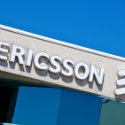
Ericsson expects 5G to account for 2.6 billion subscriptions and generate 45% of the world's total mobile data traffic by 2025, according to forecasts included in its most recent Mobility Report.
The report, which analyses the global mobile market's current state and includes predictions about how the market will change in the coming few years, notes that 5G is still in its infancy: By the end of this year only about 13 million mobile users are expected to have signed up for 5G services. However, 5G network expansion is expected to ramp up significantly in the next few years, with the Ericsson report team predicting that two thirds of the global population will have access to 5G services six years from now.
Ericsson, which uses its direct contact with, and knowledge of, the global mobile service provider community to publish a mobility report twice each year, expects rapid uptake of 5G services in North America and Europe, while the greatest cellular IoT growth is expected in North East Asia.
Currently, though, 5G's impact on global mobile subscriber numbers is negligible, accounting for just a few million of the 8 billion cellular connections worldwide, whereas 4G/LTE represents more than half of all current mobile subscriptions.
The total number of mobile subscriptions continues to exceed the number of people on the planet, according to the firm's report, thanks to individuals who have multiple devices or multiple SIM cards. China, India and the rest of Asia continue to add mobile subscriptions faster than the rest of the world.
The total number of connections continues to rise each quarter. In North America, operators added just 2 million net mobile subscriptions in the third quarter, taking the total in that region to 385 million. Every geographic region in the world recorded a net add during the three months to the end of September except for Latin America, where the number dipped by 1 million to 665 million, according to statistics included in the report.
Figure 1:  (Source: Ericsson)
(Source: Ericsson)
Right now, nascent 5G networks are supporting subscribers in Asia, the US and Europe. According to Ericsson, South Korea has almost 25% of the world's 5G subscribers (3 million out of 13 million). Ericsson predicts that China will add 5G subscribers rapidly in the year ahead.
Within the first half of 2020, Ericsson expects to see the launch of smartphones that will support 5G in almost every spectrum band currently under development for the technology, including 2.6GHz, 3.5GHz, 26GHz, 28GHz and 39GHz.
North America is the region in which Ericsson expects to see the strongest uptake of 5G over time. The company expects almost three quarters of mobile subscriptions in North America to be 5G subscriptions by 2025. That's a much higher percentage than any other region. (Western Europe is next with a projected 55%.)
Mobile data traffic
China and India are driving the huge growth in mobile data traffic. Ericsson's researchers found that in India, many more people are getting smartphones and in China, smartphone users are increasing their data usage significantly. Mobile data traffic excluding WiFi surged 68% between Q3 2018 and Q3 2019, and rose 12% between Q2 2019 and Q3 2019. But the rate of growth in mobile data traffic has subsided after peaking in the fourth quarter of last year. In the coming years, Ericsson expects mobile data traffic to grow less than 30% per year, and said that video traffic will continue to be the biggest driver of growth.
Figure 2:  (Source: Ericsson)
(Source: Ericsson)
By 2025, 5G networks will be carrying 45% of the world's mobile data traffic, Ericsson said. That forecast does not include traffic generated by 5G fixed wireless access points, which Ericsson said it cannot currently measure.
Internet of Things
2G and 3G still enable the majority of IoT connections, but Ericsson said that during 2019 "massive" IoT connections like NB-IoT and Cat-M1 grew an estimated 200% to almost 100 million. Ericsson sees NB-IoT and Cat-M1 as complementary rather than competitive technologies in some cases, noting that of the 114 service providers identified as having launched at least one of those technologies, close to a quarter have launched both.
Ericsson said North East Asia is leading the global adoption of cellular IoT. The region accounts for more than half of cellular IoT connections and will account for more than two thirds by 2025, the company said.
Massive IoT, broadband IoT and critical IoT are the three categories that Ericsson defines for the Internet of Things. The vendor said LTE networks can support the first two but critical IoT will require the ultra-reliable low-latency communication promised by 5G.
— Martha DeGrasse, special to Light Reading. Follow her @mardegrasse
About the Author(s)
You May Also Like




_International_Software_Products.jpeg?width=300&auto=webp&quality=80&disable=upscale)







